 August 17, 2017 John E. Ross, KD8IDJ, Editor
| |||||||
Solar Eclipse QSO Party Will Facilitate Real Science Amateur Radio will be in the service of science on Monday, August 21, as a total solar eclipse causes the shadow of the Moon to traverse the US from Oregon to South Carolina in a little more than 90 minutes, obscuring the sun completely for a few minutes at any given location along the way. The sudden absence of sunlight -- and especially of solar ultra-violet and x-rays -- is expected to briefly change the properties of the upper atmosphere.
"It is very important for people outside of eclipse totality to participate, because one of the questions we have is how large is the effect on the ionosphere," Frissell told ARRL. "So, we actually need people well outside of where totality is occurring to identify those boundaries."
Frissell, an assistant research professor at the New Jersey Institute of Technology (NJIT), said it's easy to be a citizen-scientist. Just getting on the air during the SEQP is a first step. Systems such as the Reverse Beacon Network (RBN), WSPRNet, and PSKReporter will automatically hear digital and CW transmissions and report back to their respective databases. Despite more than 60 years of research, "open questions remain regarding eclipse-induced ionospheric impacts," Frissell explained in a paper, "HamSCI and the 2017 Total Solar Eclipse," that he'll deliver at the ARRL-TAPR Digital Communications Conference this year. He feels that radio amateurs' advanced technical skills and inherent interest in ionospheric science make them "ideal for contributing to -- and participating -- in large-scale ionospheric sounding experiments." Actually, three HamSci-coordinated Amateur Radio experiments have been designed to study the 2017 solar eclipse. In addition to the SEQP are the HF Wideband Recording Experiment and the Eclipse Frequency Measurement Test (FMT).
The HamSCI Wideband Recording Experiment will aim to capture all Amateur Radio HF spectrum from locations across North America during the SEQP. The recordings, according to Frissell's paper, "will allow for the study of eclipse-induced propagation changes use signals generated by the SEQP, as well as examine changes in noise floor measurements throughout the time of the eclipse." The experiment was developed with input from the TAPR community. The FMT experiment will provide information as to how much and how fast the ionosphere changes in height along a particular path. According to research cited in the paper authored by Frissell and others, rapid changes in ionospheric electron density caused by the motion of an eclipse shadow "cause Doppler shifts on HF ray paths propagating through the eclipsed region." "Joe Huba and Doug Drob at the Naval Research Laboratory have calculated a prediction of what the ionosphere will look like using their physics-based SAMI3 model," Frissell pointed out. ARRL Contributing Editor Ward Silver, N0AX -- a contributor to "HamSCI and the 2017 Total Solar Eclipse" -- said the SEQP is simply a great way to experience the magic of radio.
"If you're a longtime HFer, you will hear the day-night cycle compressed and accelerated into a few hours, plus maybe some subtle things you've never heard before," Silver said. "If you are new to HF, you can clearly experience the bands changing, opening, closing very quickly. You can literally hear the world turning during this eclipse. All you have to do is turn on the radio and make contacts. Listening or operating, it will be a thrill that you can only get through ham radio." It is not necessary to register for the SEQP in order to participate, Silver pointed out, and many more stations than those who have signed up are likely to be on the air on August 21. Multiple Amateur Radio special events also will be on the air along the path of totality on August 21. Amateur Radio Communication Resources to be Available during Eclipse Day ARRL, the American Red Cross, and The Salvation Army Team Emergency Radio Network (SATERN) will partner on Monday, August 21, to provide a nationwide communication link for local and regional American Red Cross units should a communications failure occur during the solar eclipse. "Concern has been expressed by public safety, emergency management, and others that the large number of people -- over 7.5 million nationwide -- flowing into the relatively narrow path of totality may overload and disrupt the normal communication infrastructure in some local areas," SATERN said in its August 17 newsletter.
Stations checking into the SATERN net will be asked to report any local conditions that provide The Salvation Army, the Red Cross, or ARRL with such "ground intelligence" as telecommunications infrastructure outages associated with the eclipse, special preparations being made by communities for handling large crowds, and any ARES, RACES, or other Amateur Radio public service communications activated to assist during the eclipse. In addition, W1AW will activate to provide WinLink connectivity to the Red Cross DOCC, monitor HF channels with federal partners, and provide coordination assistance between national partners and the field organization. FEMA Region 10 will be monitoring and conducting a net, as necessary, on the 5 MHz/60-meter band frequencies in support of the upcoming solar eclipse on August 18-23. The following suppressed carrier reference frequencies, also known as dial frequencies or window frequencies, 5330.5 kHz, 5346.5 kHz, FEMA Region 10 will be using call sign WGY910 from its regional office in Bothell, Washington. FEMA Region 10 will also be using amateur call sign KF0EMA from Redmond, Oregon. Other stations that may be monitoring and/or participating as necessary in support of this event. The FEMA point of contact is Dave Adsit, KG4BIR, FEMA Spectrum Manager, (540) 272-4605. Contingency plans were discussed during an August 15 conference call that involved ARRL staff, American Red Cross headquarters staff and regional disaster officers, the SATERN national liaison, and ARRL Section Managers and Section Emergency Coordinators. Most ARRL Sections have already been working with the Red Cross and will be on standby. Several shared ICS 205 Communications Plans with ARRL, SATERN, and Red Cross, indicating that they plan to use nets on 40, 60, and 80 meters to handle traffic, mostly between the field and state emergency operations centers (EOCs). Amateur Radio Administration Course (ARAC) Presented in Mexico for Second Year For the second year in a row, ARRL, IARU Region 2, and the Federación Mexicana de Radioexperimentadores (FMRE) have presented the Amateur Radio Administration Course (ARAC) in Mexico City. The course was held August 7-9 at Mexico City's World Trade Center. The ARAC is aimed at the people in charge of administering the Amateur Radio and Amateur Satellite Services within the participants' respective countries. Participants were from the Instituto Federal de Telecomunicaciones (IFT) from México; Ministerio de Tecnologías de la Información y las Comunicaciones (MINTIC) from Colombia; Ministerio de Ciencia, Tecnología y Telecomunicaciones (MICIT) from Costa Rica, and from the Comisión Nacional de Telecomunicaciones (CONATEL) of Honduras.
Among other topics, the course covered the legal framework for Amateur Radio in the International Telecommunication Union (ITU), Amateur Radio spectrum, reciprocal licensing, emergency communication, and the IARU and its member societies. Other topics of less institutional and regulatory import included DXpeditions, contests, digital communication, and Earth-Moon-Earth (moonbounce) communication. The ARAC concluded with a visit to an Amateur Radio station, where course participants could gain a better understanding of what they had learned in class. They also had the opportunity to get on the air and make contacts. ARRL and IARU collaborated in developing the ARAC curriculum. -- Thanks to Joaquín Solana, XE1R, IARU Region 2 News Coordinator Plane Crash Drill Turns to Major Fire Response Over the course of a single day, ARES® Los Angeles (ARES LAX) Northwest District operators on July 8 pivoted from a plane crash mass-casualty drill to a real major fire response. With the area suffering under record 108° heat, the ARRL Los Angeles Section's ARES Northwest District Emergency Coordinator Roozy Moabery, W1EH, had no idea that an actual emergency would erupt just 6 hours after his ARES team finished a full-scale mass-casualty drill that morning.
The real emergency happened about 12 hours later -- an explosion and fire at a City of Los Angeles Department of Water and Power 230 kV receiving station in the San Fernando Valley's Northridge area. While firefighters fought flames, electric power was cut for up to 11 hours to some 147,000 homes and businesses, already suffering from the searing heat. Five hospitals ARES LAX-Northwest serves, including major trauma center Northridge Hospital Medical Center, switched to emergency back-up power. ARES LAX-Northwest quickly established a net, and Moabery immediately deployed to the 409-bed Northridge Hospital, remaining there until nearly 6 AM the next day. Assistant DEC Marty Woll, N6VI, served as net control while Assistant DEC Dean Cuadra, WA6P, and Emergency Coordinator David Goldenberg, W0DHG, kept in contact with other hospitals to determine their operational status. Although ARES only physically deployed to Northridge Hospital, other ARES members were on standby throughout the incident. The reduced electric power available at Northridge Hospital combined with the extreme heat resulted in numerous patients being relocated to unaffected hospitals. Moabery reviewed lessons learned from the drill and the emergency during his August ARES LAX-Northwest meeting. Read more. -- Thanks to ARRL Los Angeles Section Manager Diana Feinberg, AI6DF The Doctor Will See You Now! "S-Units" is the topic of the the latest episode of the "ARRL The Doctor is In" podcast. Listen...and learn!
Every 2 weeks, your host, QST Editor-in-Chief Steve Ford, WB8IMY, and the Doctor himself, Joel Hallas, W1ZR, will discuss a broad range of technical topics. You can also e-mail your questions to [email protected], and the Doctor may answer them in a future podcast. Enjoy "ARRL The Doctor is In" on Apple iTunes, or by using your iPhone or iPad podcast app (just search for "ARRL The Doctor is In"). You can also listen online at Blubrry, or at Stitcher (free registration required, or browse the site as a guest) and through the free Stitcher app for iOS, Kindle, or Android devices. If you've never listened to a podcast before, download our beginner's guide. ARRL Repeater Directory is Sold Out The 2017-2018 edition (46th ed.) ARRL Repeater Directory®, introduced in April, has sold out. Some ARRL publication dealers and online resellers may have remaining copies of the current edition, which was the first edition to use data supplied from "crowdsourcing" technology. Crowdsourcing is a means of using data gathered from public resources. Data for the Repeater Directory was supplied by ARRL partner RFinder, the creator of a web- and app-based directory of Amateur Radio repeaters worldwide. RFinder's data is provided by users, repeater owners, and volunteer frequency coordinators.
Produced annually, The ARRL Repeater Directory includes listings for Amateur Radio repeaters throughout the US and Canada, organized by state/province, city, and operating mode. Analog and digital repeater systems are included: FM, FUSION, D-STAR, DMR, NXDN, and P25 systems. The next edition will be introduced in 2018 (no additional details at this time). An annual subscription to RFinder provides immediate access to its worldwide database of repeater frequencies and related data. ARRL Audio News Announces New Extra Edition Service ARRL Audio News is proud to announce the debut of our Extra Edition service. Extra Editions are longer, uninterrupted audio segments Our first Extra Edition is an interview with radio amateurs in Williamson County, Texas, who have constructed a microwave backbone system to link several local hospitals and key ARES sites. More Extra Edition segments will be posted as time allows, so check the page occasionally for new items. Radio Eritrea and Radio Ethiopia Still Battling on 40 Meters It was a now-familiar story in the July edition of the International Amateur Radio Union Region 1 (IARU R1) Monitoring System (IARUMS) newsletter, which reports that Radio Eritrea and Radio Ethiopia are still slugging it out within the 40-meter amateur band. IARU Region 1 includes Europe, Africa, the Middle East, and northern Asia.
"The hostile brothers were daily active on 7,150 and 7,175 kHz," said IARUMS Coordinator Wolf Hadel, DK2OM. "Earlier complaints were not regarded. No change." Radio Ethiopia has been deliberately interfering with Radio Eritrea on both frequencies by transmitting white noise, Hadel said. Elsewhere on 40 meters, Radio Hargaysa in Somalia has been transmitting on 7,120 kHz, and is audible daily in Australia and Japan. On 7,200 kHz, the "Firedrake Jammer" in the People's Republic of China has been transmitting on top of a broadcaster in the Republic of China (Taiwan). The PRC considers Taiwan a province. The Firedrake (or Fire Dragon) jammer, which has been interfering with Amateur Radio signals on 40 and 20 meters over the past decade or longer, also disrupts broadcasts from the Voice of America, Radio Free Asia, and the BBC. The jammer's designation derives from the name of a lengthy Chinese folk tune that the jammer transmits. So-called "cluster beacons" from Russia have become another issue reported on the 80- and 40-meter CW/digital segments. These CW signals are showing up on several frequencies above 3,590 kHz and in the vicinity of 7,039 kHz and identify with three-letter, R-prefix call signs. They're operated by the Russian Navy, according to IARUMS. Over the Horizon (OTH) radar signals also continue to intrude on the exclusive Amateur Radio 40-, 20-, 15-, and 10-meter allocations. Ham Hoping to Crowdfund Experimental Time at HAARP Facility Another Luxembourg Effect experiment could take place at Alaska's High-Frequency Active Auroral Research Program (HAARP) facility during its September research campaign. Jeff Dumps, KL4IU -- a self-described construction worker, electronics technician, and radio enthusiast -- wants to purchase 12 minutes at the HAARP controls to carry out his investigation, which he's hoping to fund with donations. Dumps told ARRL that if he doesn't meet his funding goal, he'll donate whatever money has been contributed to the Arctic Amateur Radio Club (KL7KC) and HAARP.
The super-power ionosphere research facility is owned and operated by the University of Alaska-Fairbanks Geophysical Institute. The HAARP site includes a huge array of transmitting antennas, transmitters and amplifiers, and computerized controls. In the past, it has been used for experiments that involve ionospheric heating. Dumps concedes that his is an amateur's approach to a science experiment. "It may not be in a typical fashion one would see from a physics student or a scientist," he said. "Even if my experiment doesn't provide any insightful information, as happens quite often in real scientific experiments, it will be a great opportunity to test a hypothesis." Dumps said he hopes his experiment will inspire and motivate others to pursue their own scientific interests. UAF Space Physics Group Assistant Research Professor Chris Fallen, KL3WX, who conducted is own Luxembourg Effect experiment earlier this year, said he wishes Dumps well in his efforts. Fallen transmitted some music during his own Luxembourg Effect experiments last February. In addition to tones, he transmitted a dance track, an arrangement of Pachelbel's Canon, and a variation of "Row, Row, Row Your Boat." Dumps composed some of the music, and he arranged and performed all of it.
"Generally, any scientist with funds can conduct experiments with HAARP, provided the experiment conforms with technical limitations of the facility and with federal regulations," Fallen told ARRL. "I think it is exciting to see public citizen-scientist interest in performing -- and funding -- HAARP experiments. There are many new science opportunities when the collective creativity, knowledge, and resources of radio enthusiasts are unleashed." Fallen said UAF's Geophysical Institute is operating HAARP with a "user fee model," in which fees paid for HAARP time by scientists -- typically with federal grant support -- fund the operations and maintenance of the facility. Currently, that fee is $5,000 per hour, to cover such expenses as generator fuel, compensation of year-round support staff, and heating the facility throughout the winter. "Short experiments consisting of a few hours or less are typically bundled together in 'experiment campaigns' for cost efficiency," Fallen explained. If the crowdfunding campaign is successful, Fallen said he plans to help Dumps in constructing an experiment they can perform. In Brief...
The K7RA Solar Update Tad Cook, K7RA, Seattle, reports: Several readers pointed out that averages for the various indicators we track were not correct last week. The average daily sunspot number was 12.1 instead of 5, average daily solar flux was 73.2 instead of 71, the average daily planetary A index was 11.3 instead of 5, and the mid-latitude A index was 6.9, instead of 6. The August 10-16 week showed average sunspot numbers at 15.3 and average solar flux at 72. Predicted solar flux is 78 on August 17-24; 68 on August 25-28; 70 on August 29; 72 on August 30-September 8; 70 on September 9; 68 on September 10-24; 70 on September 25, and 72 on September 26-30.
Sunspot numbers for August 10-16, 2017 were 11, 11, 11, 11, 12, 21, and 30, with a mean of 15.3. The 10.7-centimeter flux was 71, 69.8, 70.3, 68.2, 73, 74.2, and 77.3, with a mean of 72. Estimated planetary A indices were 5, 7, 11, 7, 5, 4, and 6, with a mean of 6.4. Estimated mid-latitude A indices were 7, 7, 12, 9, 5, 3, and 5, with a mean of 6.9. Monthly propagation charts are available between four US regions and 12 locations around the globe. An archive of past weekly Solar Update bulletins is available. Send me your reports and observations. Just Ahead in Radiosport
See the ARRL Contest Calendar for more information. For in-depth reporting on Amateur Radio contesting, subscribe to The ARRL Contest Update via your ARRL member profile e-mail preferences. Upcoming ARRL Section, State, and Division Conventions
Find conventions and hamfests in your area.
. .
Subscribe to...
Free of charge to ARRL members...
| |||||||

.JPG)
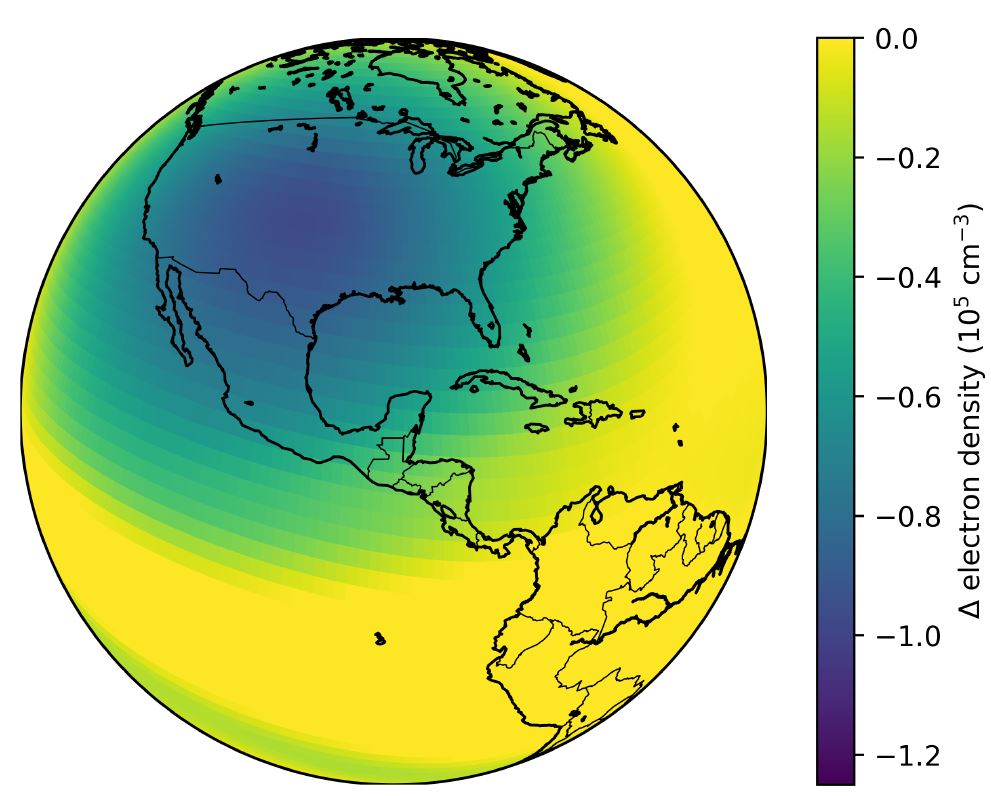

%20NASA%20logo.JPG) If that happens, the Red Cross will use local Amateur Radio Emergency Service® (ARES) units to provide local back-up communication. The Red Cross is interested in regional and national HF communication capability and the ability to pass traffic to its Digital Operations Coordination Center (DOCC) at its national headquarters. At ARRL's request, SATERN will activate its net on 14.265 MHz on an extended monitoring status, from 1400 until 2200 UTC on August 21. The SATERN Net also may be used as a clearing house for voice traffic if the Red Cross requires long-range or nationwide communication capability.
If that happens, the Red Cross will use local Amateur Radio Emergency Service® (ARES) units to provide local back-up communication. The Red Cross is interested in regional and national HF communication capability and the ability to pass traffic to its Digital Operations Coordination Center (DOCC) at its national headquarters. At ARRL's request, SATERN will activate its net on 14.265 MHz on an extended monitoring status, from 1400 until 2200 UTC on August 21. The SATERN Net also may be used as a clearing house for voice traffic if the Red Cross requires long-range or nationwide communication capability.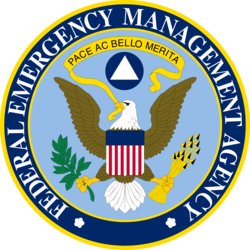 5357.0 kHz, 5371.5 kHz, and 5403.5 kHz, will be used as part of the event.
5357.0 kHz, 5371.5 kHz, and 5403.5 kHz, will be used as part of the event.%20Attendees.jpg)
.jpg) The mass-casualty drill scenario involved numerous hospitals and agencies responding to a private plane crash at a busy freeway junction in the Encino area. ARES LAX-Northwest members deployed to their assigned hospitals by 7 AM for the drill, prepared to handle back-up communication on hospital utilization and bed availability. Moabery said the drill provided an excellent example of how ARES interfaces with other disaster-focused Amateur Radio organizations.
The mass-casualty drill scenario involved numerous hospitals and agencies responding to a private plane crash at a busy freeway junction in the Encino area. ARES LAX-Northwest members deployed to their assigned hospitals by 7 AM for the drill, prepared to handle back-up communication on hospital utilization and bed availability. Moabery said the drill provided an excellent example of how ARES interfaces with other disaster-focused Amateur Radio organizations..jpg) Sponsored by
Sponsored by .jpg) "This is a great milestone for the Repeater Directory," said ARRL Marketing Manager Bob Inderbitzen, NQ1R. "We know users still value having a printed, portable copy of the directory in-hand, and we've given them a better and more complete snap shot of the repeaters that are on the air." The 2017-2018 edition has 31,000+ listings -- 10,000 more than the previous edition.
"This is a great milestone for the Repeater Directory," said ARRL Marketing Manager Bob Inderbitzen, NQ1R. "We know users still value having a printed, portable copy of the directory in-hand, and we've given them a better and more complete snap shot of the repeaters that are on the air." The 2017-2018 edition has 31,000+ listings -- 10,000 more than the previous edition.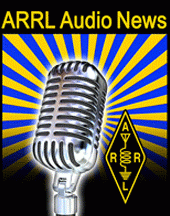 devoted to particular topics. They will be posted on the
devoted to particular topics. They will be posted on the 
(1).jpg) "My experiment will attempt to answer some questions about how audio frequencies transfer between radio stations during the Luxembourg Effect (Ionospheric Cross Modulation)," Dumps explained in describing his proposed experiment.
"My experiment will attempt to answer some questions about how audio frequencies transfer between radio stations during the Luxembourg Effect (Ionospheric Cross Modulation)," Dumps explained in describing his proposed experiment.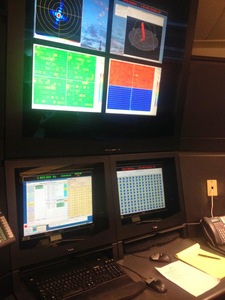
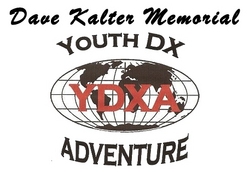 Youth DX Adventure Wraps Up: The Dave Kalter 2017 Youth DX Adventure (
Youth DX Adventure Wraps Up: The Dave Kalter 2017 Youth DX Adventure (.jpg) ARRL Announces Colvin Award Grant to Bouvet Island 3Y0Z DXpedition: The ARRL has granted a
ARRL Announces Colvin Award Grant to Bouvet Island 3Y0Z DXpedition: The ARRL has granted a 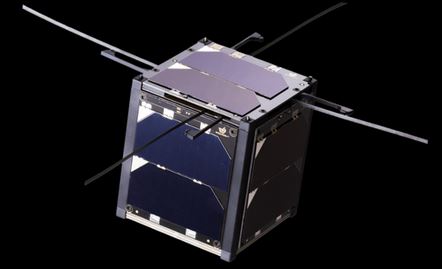 First Bulgarian Amateur Radio CubeSat to Launch in 2018: The Bulgarian Federation of Radio Amateurs (BFRA) is collaborating with the Space Challenges program and EnduroSat to launch the first Bulgarian Amateur Radio CubeSat --
First Bulgarian Amateur Radio CubeSat to Launch in 2018: The Bulgarian Federation of Radio Amateurs (BFRA) is collaborating with the Space Challenges program and EnduroSat to launch the first Bulgarian Amateur Radio CubeSat --  Predicted planetary A index is 26, 20, 16, and 14 on August 17-20; 12 on August 21-22; 8 on August 23; 5 on August 24-29; 12, 24, 18, and 14 on August 30-September 2; 5 on September 3-7; 10 on September 8; 8 on September 9-10; 5, 10, 20, 25, 15, 12, 10, 8, and 6 on September 11-19; 5 on September 20-25, and 12, 24, 18, 14, and 5 on September 26-30.
Predicted planetary A index is 26, 20, 16, and 14 on August 17-20; 12 on August 21-22; 8 on August 23; 5 on August 24-29; 12, 24, 18, and 14 on August 30-September 2; 5 on September 3-7; 10 on September 8; 8 on September 9-10; 5, 10, 20, 25, 15, 12, 10, 8, and 6 on September 11-19; 5 on September 20-25, and 12, 24, 18, 14, and 5 on September 26-30.







